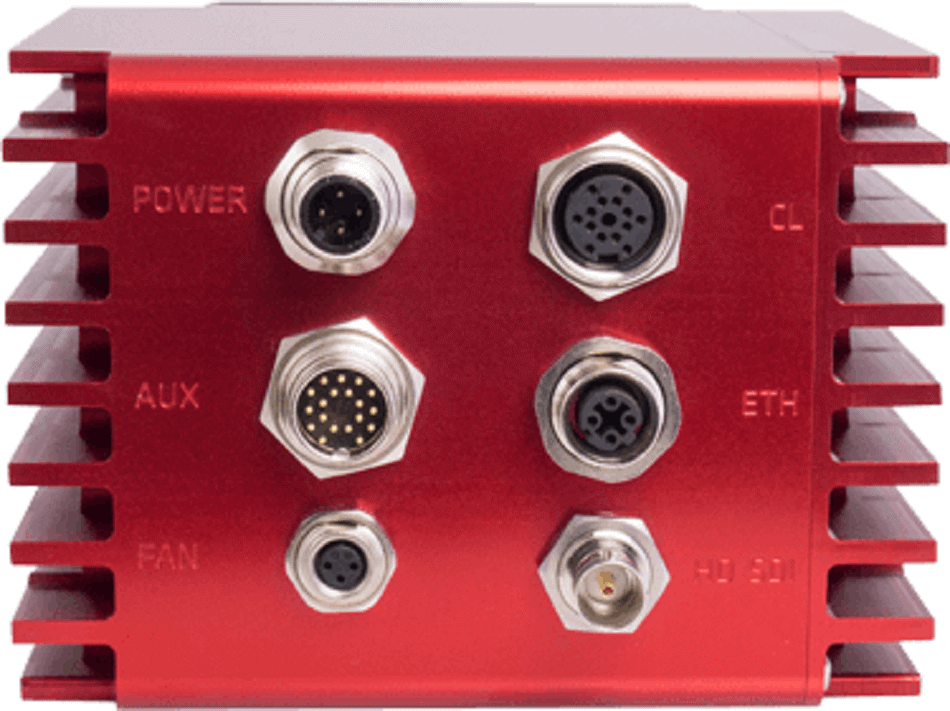
Chris Johnston, President at Sierra-Olympic, talks to AzoSensors about the applications of the world's first HD infrared camera and the inspiration and difficulties of its creation.
Can you give a brief overview of your company and the work you do?
Sierra-Olympic was founded in 1995 as a sales representative firm for what was, back then, Raytheon-Amber. Before it became a division of Raytheon, I was a sales person for Amber, and through the transitions, Raytheon at the time wanted to switch to sales representation from inside sales, and thus, the motivation for founding the company.
Through dozens of mergers and acquisitions in the infrared imaging industry, we have worked with the very highest performance manufactures in the business. These exemplary firms eventually were acquired, and we moved on to the next project.
Eventually we started hiring staff and generated enough sales to make our company become a target of acquisition, and were acquired by a group of investors who had resources for our expansion. We started developing accessories, systems, and eventually started manufacturing our own cameras, which brings us to where we are today.
Our largest business is the supply of infrared sensors, systems, and optics for the US remotely piloted aircraft (RPA) business. We are an OEM supplier of LWIR and MWIR cameras and imaging components, and we manufacture infrared cameras for end-users.
My personal work is mostly involved with tactics and strategies of running the business. This involves everything from investment agreements to cleaning the coffee room.
Sierra-Olympic Technologies has recently developed the world’s first HD Infra-Red camera, the Vayu 1080p HD. When did you first recognize the need for such a camera?
I have been involved in most new technologies in infrared imaging. Since 1989, when we were first selling huge liquid nitrogen-cooled indium antimonide (InSb) sensors, we have seen every major advancement in all infrared imaging wavelengths, from most manufacturers, worldwide. As an independent sales agency, we can offer the flexibility to assist in commercial sales of components and camera systems that may not be available within more formally-structured organizations such as our military customers. Most of these military companies appreciate our level of technical capability and our commercial orientation, and we have participated in the deployment of nearly all new infrared technologies.
Fast forward to the present, we instantly recognized the uniqueness of the new 1920 x 1200 LWIR sensor from BAE. We studied its technical implementation, and put together a team to take the tricky imaging core and implement it into a finished camera product in about 5-6 months. We sensed the need for such a product because of the continuous push for more pixels in almost every imaging endeavor. Infrared is always a decade or more behind the resolution achievements in visible sensors. And the technical challenges in infrared might never allow us to reach the current 27 MP sensor resolution you can buy in a nice Nikon. But clearly, the leap from the so called “high resolution 640 x 480 thermal imager” to the 1080p thermal imager is a big deal. Just that leap was motivation for us.

Image Credits: Sierra-Olympic
We have a number of pixel resolution driven initiatives with customers that will drive the market need for 1080p resolution. The first is a search and rescue project with one of our RPA customers that is quickly moving from day operations to night operations. While most current work is achieved with COTS 640x480 LWIR sensors, there will be a demand in night search and rescue with HD LWIR.
The second market driver for HD LWIR is ground and airborne navigation. There is a fundamental need for greater pixel coverage, and the HD sensor provides this leap in resolution.
What difficulties did you face during the development of such a unique camera?
The greatest difficulties presented have to do with unknown sensor performance. BAE has been a superior partner in working through the sensor issues and we are approaching a highly operable product very rapidly.
The other major problem is supply. The investment in the technology is appreciable to support the build-up of the supply chain for the sensors. Because of the sensor’s uniqueness, there is not a large customer base, so we are out on a limb with sensor product.

Image Credits: Sierra-Olympic
What are the capabilities of the Vayu 1080p HD?
The fundamental capabilities of the Vayu 1080p HD LWIR camera are similar to those found in a number of standard imagers. In the HD world, the video standard is HD-SDI, which the Vayu HD provides. We also offer a compressed H.264/MJPEG IP-Video stream for Ethernet video capability. And we have a Base Camera Link® output for the unprocessed 16-bit video.
We developed a custom 24 mm F1.1 optic for a 54-degree horizontal field of view for the sensor. No commercial optics for the sensor exist, so when we started, we knew custom lens development was required. Since then, other lens developers have stepped up with designs for additional focal lengths. We have designs on the drawing board poised for the time when customers have the need for different requirements.
We have critically important advanced processing on the video in the Vayu HD. We offer numerous processing steps that truly create the best LWIR thermal image I have ever seen, and I doubt many have seen more, different thermal images from a wider array of devices from a larger number of manufacturers.
Advanced standard features include all the compression for IP-video streaming, electronic image stabilization, on-board image and video storage with trigger, and a capability to tag image data with NMEA-0183 data via serial input of data.
Did you develop any addition features to use with the Vayu 1080p HD?
Additional optional features that we can enable include video object tracking, moving object tracking, and telemetry output of tracking data to drive positioners.
Viento HD fly by
What kind of data acquisition systems are available?
Our goal was to provide a system that offered industry standard outputs for data acquisition. We can easily use standard HD-SDI storage and analysis systems common in the imaging industry. Our Base CameraLink output is compatible with standard frame grabbers. The IP-Video streaming will plug into any network. We will soon have ONVIF-S compliant video streaming for the video surveillance market.

Image Credits: Sierra-Olympic
What applications do you see the Vayu 1080p HD having? Which industries do you feel will benefit the most from the product?
Search and rescue, navigation and situational awareness, video security and surveillance, maritime imaging.
What is next for Sierra-Olympic?
Hiring more engineers and support staff, expanding export markets and trade compliance programs, and optimizing the limited space we currently occupy.
In technology, expansion of finished products in standard definition LWIR and MWIR sensors, continued work with our RPA customers on the most innovative low SWAP-C sensors, and investment in finished products exploiting new small-pixel MWIR and LWIR sensors.
About Chris Johnston
 Chris Johnston co-founded Sierra-Olympic Technologies, Inc. in 1995 to provide a sales network for advanced, cooled infrared (IR) camera technologies. Chris’ experience spans the earliest commercially-available indium antimonide (InSb) focal plane arrays to the most sophisticated FPA-based IR imaging technologies that are available today. His vast background and broad knowledge of infrared imaging, microbolometers, optical assemblies, engineering, software, image processing, and digital acquisition technologies, complement his enthusiasm and keen interest in the field of infrared imaging.
Chris Johnston co-founded Sierra-Olympic Technologies, Inc. in 1995 to provide a sales network for advanced, cooled infrared (IR) camera technologies. Chris’ experience spans the earliest commercially-available indium antimonide (InSb) focal plane arrays to the most sophisticated FPA-based IR imaging technologies that are available today. His vast background and broad knowledge of infrared imaging, microbolometers, optical assemblies, engineering, software, image processing, and digital acquisition technologies, complement his enthusiasm and keen interest in the field of infrared imaging.
Chris was named President of Sierra-Olympic when it was acquired in 2010 by Hood Technology Corporation (Hood River, Oregon). In this role, he continues to lead the exciting and growing industry by providing innovative thermal imaging solutions for shortwave-, midwave-, and longwave-infrared camera users and integrators.
Disclaimer: The views expressed here are those of the interviewee and do not necessarily represent the views of AZoM.com Limited (T/A) AZoNetwork, the owner and operator of this website. This disclaimer forms part of the Terms and Conditions of use of this website.